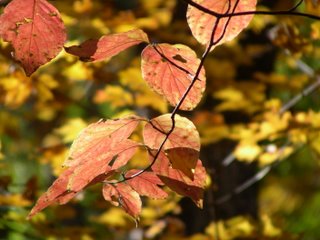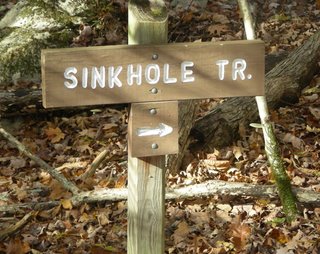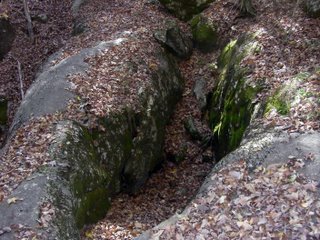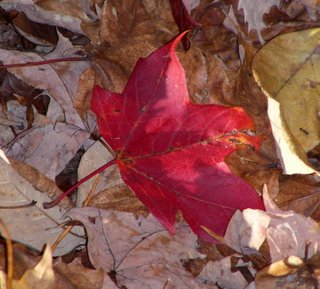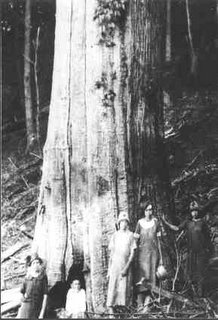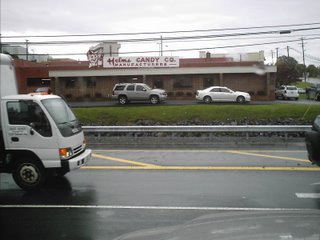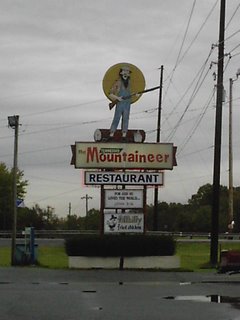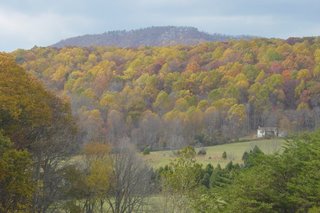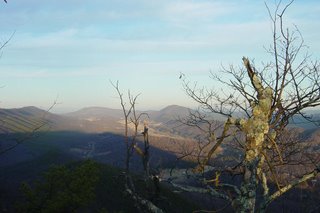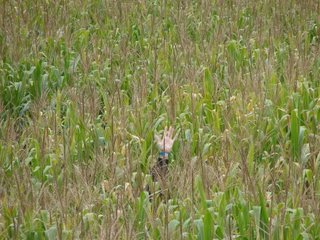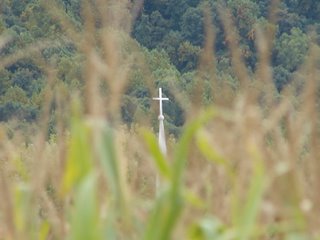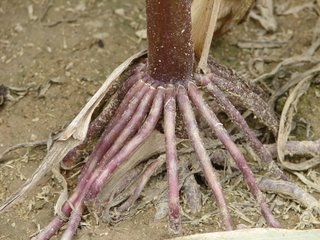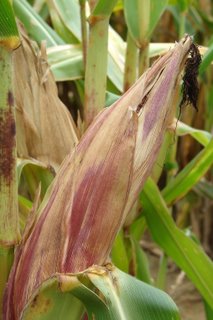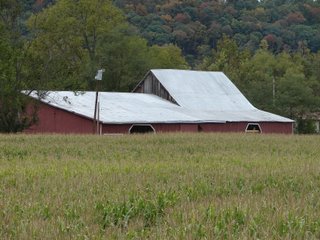I try to keep up with what the folks over at Appalachian Greens are saying - I'm an independent myself, but I've voted for my fair share of Green candidates (of course, I've also voted for Republicans, Democrats, and Independents) and I like to keep up with what they're saying. Well, I was reading this afternoon and found this great historical entry on Wheeling, West Virginia's early history. The entry, posted by a gentleman named kayakdave (sorry, no full name) is, apparently, going to be multi-stage. Don't worry, we'll keep an eye out.
Wheeling, West Virginia, a settlement on the 18th century frontier, it’s early history.
Before Europeans took over, the land in the vicinity of Wheeling was inhabited by what is assumed to be the ancestors of modern American Indians. Evidence of human habitation can be found dating to around 15,000 years ago. Later, about 1,000 years ago, a culture known collectively as Moundbuilders inhabited the area, leaving behind large earthen mounds. Moundsville, WV, as you can probably guess, is the home to a very large one. The Moundbuilders left little behind other than their mounds but seem to have developed agriculture and lived in fairly large communities with an apparent class system. By 1749, tension over the fur trade and overlapping claims of the English and French in the Ohio Valley led to an expedition headed by Capt. Pierre Joseph de Celoron de Blainville being sent down the river to officially claim the land. ( I have heard that they needed a canoe just to haul his name along!) On June 15, 1749 Blainville left Montreal with 272 men. Hugging the south shore of Lake Erie they found the mouth of Apple Creek and ascended to the portage. After much trial and toil they reached the Allegheney River and buried the first of the lead plates which claimed the land for France. Eventually they reached the mouth of Wheeling Creek and buried yet another lead plate- which has never been found. The seventh and last lead plate was buried at the mouth of the Great Miami River, near present Cincinnati, OH. Blainville ascended the Miami, portaged to the Auglaize River and descended to the western end of Lake Erie and made Montreal on Nov. 10, an average of 16 miles a day, not bad. Soon the English responded and the French and Indian War broke out. When it was over, the French had been evicted from North America. With the French gone, seeds of Revolution germinated in the minds of some Americans.
The stage is now set. Enter the actors.
Ebenezer Zane, 22 years old, had an itch and a vision. The itch had made him move to Redstone Creek, present Brownsville, PA. His vision would lead him to erect the first cabin in what would become Wheeling, West Virginia. From listening to traders returning from Indian territory he saw that instead of floating down the Monongahela River (locally called the Mon) to Pittsburgh and then down the Ohio it would be easy to strike out due west on horseback and eventually hit the Ohio. The Ohio River has had many names. The Shawnees called it Spaylaywitheepi, the Iroquois called it Oligensipen and the French called it La Belle Riviere, and there were others. Most all of the names mean essentially- the beautiful river. It was also a river of death.
In June 1769, along with his brothers Silas and Jonathan, friend Isaac Williams, 4 dogs and two slaves Ebenezer set out on his expedition. Swimming the Mon, they followed Ten Mile Creek to the northwest and it’s headwaters. They soon encountered the headwaters of Wheeling Creek. Several days later they encountered Middle Wheeling Creek entering Wheeling Creek from the east. Middle Wheeling Creek is almost as large as Wheeling Creek and for the next 8 miles Wheeling Creek takes on the proportions of a small river. The Shawnees referred to Wheeling Creek as Macatetheepi- Gunpowder River. The forks of Wheeling Creek are mentioned in a journal of G. Washington. Members of the Washington family would claim land in the area in the near future. Just below the forks Zane encountered an elderly Delaware Indian cooking a fish. After making peace signs Zane approached the Indian and asked the name of the creek. "Weiling" replied the Indian. So Wheeling it was.
( I guess these folks were not to creative in the name department. Today there is "Big" Wheeling Creek, "Middle" Wheeling Creek and "Little" Wheeling Creek. These are pronounced "crick" amongst us natives and only become "creek" when speaking to outsiders.)( I don’t know if it is my own personal quirk or not but if I say "I’m going down to the creek" I say "crick". If however I say I’m going down to Buffalo Creek I pronounce it "creek", as if using the official name somehow forces conformity.)
The party reached the mouth of the creek and were delighted with the rich bottomland they found. Ebenezer, as the eldest, made the first claim on a fine level terrace north of the creek about 16 feet above the water. The brothers had soon claimed all the land along Wheeling Creek clear back to the fork, well in excess of the limit. Apparently the claims were never questioned. (There is also a Wheeling Creek that enters the Ohio River from the west almost directly across the river from Wheeling Creek. In fact almost every creek along this stretch of river has a counterpart across the river with the same name. To avoid confusion the Wheeling Creek that enters the Ohio from the east will be called Wheeling Creek. The Wheeling Creek that enters the river from the west will be referred to as Indian Wheeling Creek, as was the practice back then) Their lust for land satisfied for the moment, they cleared ten acres on Ebenezer’s claim and erected a cabin. Isaac Williams however had a bit more wanderlust in his blood than the Zanes and decided to set off down the Ohio saying he would be back after a spell. Ten years later Williams returned, having seen the Rockies and points thereabouts.
Silas remained at the cabin while Ebenezer and Jonathan returned to the Zane cabin on Redstone Creek to bring Ebenezer’s wife to their new home in the spring. Ebenezer’s wife, Elizabeth, presented him with their first child upon his arrival, a daughter named Catherine. Catherine would grow to maturity in Wheeling and marry Capt. Absalom Martin of the US Army. Elizabeth was as taken with the land as her husband had been and they agreed that here they would sink their roots.
Lewis Bonnett, John Wetzel, Conrad Stoup, Martin Stull, George Rhinehart, Jacob Reagen, Martin Kellar, John Pectoll, James Clark, Abraham Messer and Adam Grindstaff set out from Redstone in 1770 having reached the same conclusion as Zane but a year latter. They hit the headwaters of Wheeling Creek and followed it downstream only to be disappointed when they found all the bottomland from the Forks of the Wheeling to the river already claimed. So they backtracked to the Forks and started claiming land going up Wheeling Creek. Bonnett as leader got first pick and the rest drew straws. ( I now live on a piece of Bonnett’s claim, it later became my cousin’s farm and I live in what I remember as a corn field. Is this progress?) Wetzel had bad luck and ended up some seven miles above the Forks. While claiming his land Wetzel spotted a bear in a hollow tree. He brought the tree down with several blows of his ax and when the bear tumbled out he jumped on it’s back, encircled it’s throat with one arm and killed it with a few strokes of his tomahawk, while his companions hooted and cheered.
A family of seven came down the Ohio and claimed land at the mouth of Short Creek, 9 miles above Wheeling. Samuel and Rachel McCulloch had 2 daughters and four sons, Nancy, Samuel, John, Abraham and George. Their other daughter, Elizabeth, had married a fellow named Zane. Sam and Rachel quickly decided that there was much danger of Indian attack and returned to their home on the South Branch of the Potomac. Their grown children determined that they would stay.
A settlement named Holliday’s Cove was established in May 1771, 25 miles above Wheeling. Among the settlers was one Harmon Greathouse and his sons Jacob and Daniel.
Talgayeeta, known as Chief Logan to the whites, was reported to have fine strong features and kind eyes. He was born in the village of Shamokin at the forks of the Susquehanna about 1731, the son of Shikellimus. Shikellimus was friendly with William Penn and his friend John Logan. When Talgayeeta was born Shikellimus gave him an alternate name-Logan. Chief Logan became well known for his generosity and hospitality, often referred to in the writings of the day as "a friend to the white man". Known as a man of peace he was also known to be a frightful enemy when circumstances so dictated. At the outbreak of the French and Indian War, Logan declared himself neutral and was ostracized by his tribe. He called upon others that felt as he did to join him and he established a settlement in present Mifflin County, PA. A goodly number went with him and they began referring to themselves an Mingos- Chiefs all, Warriors all- nobody outranked anybody.
Ebenezer Zane began selling off lots and by 1774 Wheeling had become a village of some 40 souls and a trading center. Rumors of Indian attacks swept the upper Ohio Valley in the spring of 1774 and a meeting was held at Briscoe’s Settlement, present Parkersburg, WV. Among those present were Briscoe, Jacob Greathouse , Capt. Mike Cresap and about 3 dozen others. There was talk of attacking the Indians but Cresap felt the best thing to do was to go upriver to Wheeling where there was better protection and there would likely be more information available, as no one present had actually seen any signs of an actual Indian attack.
By this time Logan had relocated his village to the mouth of Yellow Creek, just south of present Wellsville, OH, where it enters the Ohio. (Today the State of Ohio maintains a rest stop on the south shore of Yellow Creek opposite the site of Logan’s settlement, no marker is present. I generally stop here on the return trip when I visit the son)(I have an oak tree growing in my back yard that was started from an acorn taken from the site of Logan’s settlement- I also planted an acorn from Monticello at my last home, I guess the tree is still there)
Some 400 people were now assembled at Wheeling. The Zanes argued that nothing should be done to start trouble with the Indians as no real information was at hand. Cresap and Greathouse argued for an attack. A goodly number of people packed up and headed east toward Catfish Camp,(present Washington, PA) Redstone, (present Brownsville,PA) and beyond, giving up on settling the west. A messenger arrived from Ft. Pitt with a warning from the commander to increase their watchfulness as Indian trouble was expected. A group of about 20 Indians was reported at the mouth of Captina Creek some 10 miles south of Wheeling. An attack was organized, amidst protests from those with cooler heads, and set off. The attack was bungled when a settlers gun went off accidentally and alerted the Indians. Nevertheless 3 Indians were killed and several wounded along with a settler known only as Big Tarrener. Two Indians were killed at the mouth of Indian Short Creek the following day. Big Tarrener later died of his wounds at Catfish Camp.
Cooler heads started to prevail when what had been done began to sink in. A group of 32 were not yet satisfied and they headed upriver to Yellow Creek, some 35 miles above Wheeling. Among the 32, known to have participated were Daniel & Jacob Greathouse, Rafe & John Mahon, Joseph Tomlinson, Ed King, John Martin, George Cox, John Sappington, William Grills, Michael Myers, William Fitzgerald, Joseph Smith (a one armed man) and John Biggs. It is believed Joshua Baker and Samuel Tomlinson also participated. The names of the remainder have been lost to history. Cresap did not participate, though his name would become linked to the massacre.
They lured some of the Indians to the east bank, known as Baker’s Bottom, with kegs of whiskey and promises of a great party. Most of the whites remained hidden and in the middle of the festivities the attack was launched. Logan, who was not present, lost his brother, wife, nephew, sister and possibly his mother. His sisters unborn baby was removed and scalped. All told about 20 Indians were murdered. Logan vowed revenge. All accounts indicate he got it. He may have killed David Duncan, a frontiersman of some note. Shortly after this a delegation of Indians on a peace mission were ambushed at Ft. Pitt and as they say, it hit the fan. The First Continental Congress met in Philadelphia. Indian raiding parties penetrated deep into West Virginia and Pennsylvania killing whole families. A expedition was organized to attack the Indian villages located in the area of present Columbus, OH. General Andrew Lewis led half the expedition down the Kanawha River to Point Pleasant, WV on the Ohio and camped there awaiting the arrival of the expeditions other half under Lord Dunmore. The Indians attacked Lewis at his camp. The Battle of Point Pleasant ended pretty much a draw with casualties fairly heavy on both sides. The Indians withdrew back across the Ohio with Cornstalk standing in his canoe facing backwards so that it could not be said he had turned his back on the whites. Lord Dunmore then landed on the Ohio shore rather than follow the plan to meet up with Lewis. This was designed to steal the glory from Lewis and the Colonial militia. With Dunmore’s army approaching, the Indians sued for peace and a treaty was worked out at Camp Charlotte. Lewis marched his army to attack anyway and was finally ordered east at the insistence of Dunmore. Later, at the start of the Revolution, Lewis would have the pleasure of chasing Dunmore out of Virginia.
When invited to the Camp Charlotte peace talks toward the end of the year Logan instead dictated a message to be delivered.
" I appeal to any white man to say if ever he entered Logan’s cabin hungry and I gave him not meat; if ever he came cold or naked and I gave him not clothing. During the course of the last long and bloody war, Logan remained idle in his tent, an advocate of peace. Nay, such was my love for the whites that those of my own country pointed at me as I passed and said, "Logan is a friend of the white man." I had even thought to have lived with you, but for the injuries of one man. Colonel Cresap, the last spring, in cold blood and unprovoked, murdered all the relatives of Logan, not sparing even my women and children. There runs not a drop of my blood in the veins of any living creature. This called on me for revenge. I have sought it. I have killed many. I have fully glutted my vengeance. For my country, I rejoice at the beams of peace; but do not harbor the thought that mine is the joy of fear. He will not turn on his heel to save his life. Who is there to morn for Logan? Not one."
The agreements reached at Camp Charlotte were pretty much ignored by both sides. Both sides continued to kill members of the other when the opportunity presented itself.
At the beginning of the American Revolution most Indian tribes attempted to remain neutral. Thayendanegea, Chief Joseph Brant to the whites, persuaded the Mohawks and the Six Nations to back the British early on however. The Six Nations would pay a terrible price some years later as the Revolution cooled down in the North. With trouble afoot the Zanes erected a fort at Wheeling and converted the cabin to a blockhouse. Fort Henry, named after Patrick Henry, wasn’t all that much of a fort but it was better than nothing.
Old John Wetzel, as he became known around Wheeling, had over 100 acres cleared and producing crops on his claim in the seven years since his arrival. In the year of the "bloody three sevens" his children were Christina 21, Martin 20, George 17, Lewis 13, Jacob 11, Susan 9 and John Jr. 7. Old John took Lewis and Jacob for a long walk in the woods and set up camp, cooked a meal and asked the kids if they were planning to eat as this meal was his alone. You can find things to eat all around you if you get hungry he told them. This was their introduction to survival on the frontier. In August, 1777 Old John took his family to hole up in Wheeling for a spell. After a week he, Lewis Jacob and George headed up the creek to tend the crops. As they neared their cabin everything seemed to be in order. The horses were there and the dog was still nursing the 4 pups. Nothing had been disturbed in the cabin. So the four began hoeing, George and Old John inexplicably leaving their rifles in the cabin. After a time Old John sent Lewis and Jacob to fetch the rifles. The boys had just entered the cabin when a party of seven Wyandots appeared. They shot Lewis, wounding him lightly and captured the boys. Grabbing the rifles, blankets, horses and such they fled with their prisoners. Old John and George having heard the shot could only watch helplessly from nearby hiding before they headed for Wheeling for help. Lewis and Jacob were taken across the Ohio and several miles inland before nightfall. They were tied up for the night. In the morning they were led northwest for a day. That night the boys got loose, retrieved the stolen guns and headed east, avoiding detection throughout the day and eventually emerged on the Ohio at the mouth of Indian Wheeling Creek.
The capture of the Wetzel boys caused considerable consternation. Patrols were organized to detect Indian intrusions on the east bank of the Ohio. It was one such patrol consisting of Old John, George, Martin Wetzel and John Baker that set out, August 22 to check on McMechen’s Settlement some 5 miles below Wheeling. Finding no sign of Indians they continued another 9 miles to Round Bottom to check on the blockhouse there. Several families were holed up and reported having seem Indians about. They decided to continue to Cresap Bottom another 6 miles and a full 20 miles below Wheeling. While at that blockhouse a party of Indians emerged on the shore across the river. John Baker took aim and the others began teasing him that he would never hit one at 300 yards. Baker fired and an Indian dropped stone cold dead across the river. Baker hurriedly crossed to claim the scalp despite Old John’s warnings that it would be best to wait a spell. With no real choice the Wetzels followed. As Baker stepped ashore two shots rang out and Baker collapsed on shore. Two Indians appeared and drug him into cover. Screams were heard as the Wetzels landed. They found Baker still alive, shot twice in the chest and stomach, scalped and his eyes torn out. They got him back to the east shore where he soon died.
On the morning of Sept.1, 1777 the Indians attacked Wheeling. Dr. David McMahan, of Baltimore, MD, owned two slaves, Sam and Ezra, who were rounding up horses with the help of John Boyd and Jacob Greathouse. As they recovered the horses and turned back toward the fort a shot rang out and a ball passed through Boyd’s throat, killing him instantly. The Indians charged the group who turned and fled. Ezra was captured and never seen again, Greathouse and Sam got away to the fort. The shot alerted Wheeling and everyone fled to the fort except for a group including Silas, Elisabeth and Jonathan Zane which manned the blockhouse. Col. Shepherd, commander of Ft. Henry, sent out a patrol under Captains Meason and Ogle with 24 men to see what was up, leaving 33 men in the fort. As the patrol neared the ambush site the patrol was itself ambushed. Martin Wetzel escaped back to the fort, John Caldwell escaped across the creek in the direction of Shepherd’s Fort at the Forks of Wheeling Creek and Robert Harkness escaped up Wood’s Run and eventually made it to Fort Vanmetre on Short Creek. Nineteen of the 26 were killed outright, the remainder getting away. At least one didn’t stop until reaching Cumberland, MD. At Ft. Vanmetre, Maj. Samuel McCulloch rounded up 31 men and, with all on horseback, headed to Wheeling after sending a runner to Holidays Cove with news of the attack. When they came within sight of Ft. Henry Sam ordered his brother, John, to lead the troops into the fort and he would bring up the rear. They raced for the gate and Sam got cut off as Indians emerged from the nearby cornfields. He turned to backtrack but found Indians blocking the way. Sam turned up Wheeling Hill in an effort to escape. All the riders made it to the fort with several of them receiving light wounds and 5 horses had to be put down. Having raced the 7 miles to Wheeling and now climbing the 400 feet to the top of Wheeling Hill, McCulloch’s horse was near spent when he met another group of Indians. Almost without thought McCulloch turned right and urged his mount over the cliff on the east side of the hill. The Indians gathered at the top and watched as McCulloch and horse emerged from the trees at the bottom. When they saw this the Indians raised a cheer for their courageous enemy. Today there is a marker at the spot alongside US Route 40 to commemorate the event. Rt. 40 did not exist at the time so McCulloch had to have jumped from even higher than the location of the monument. I’ve been there and looked over. It’s near straight down. That none of the Indians attempted to follow him points out the desperation McCulloch felt when he rode over the edge. It’s known as McCulloch’s Leap. A bar, that no longer exists, at the base of the hill was known as "The Leap". McCulloch’s white horse spent the rest of it’s life being well cared for and honored before dying at age 34. The horse outlived it’s fabled owner but that happens later. A British officer approached the fort under a flag of truce and called for it’s surrender. The reply was typically American. The assault against Wheeling began just after the arrival of McCulloch’s troops and raged for 6 hours before sundown. In the Zane blockhouse it was discovered that a keg of gunpowder that was to be kept on hand was empty. Elizabeth Zane (Betsy) demanded she be the one to run to the fort for more powder. Apparently she was a woman that usually got her way. She dashed the 60 yards to the fort and 2/3 of a keg of powder was dumped into her apron. The Indians had not fired at her for some reason. The return trip was more eventful. Slowed by the weight she struggled back to the blockhouse with bullets whizzing around her, several tore through her skirt. Betsy had secured her place in local folklore. Everyone in the fort was busy. Mrs. Henry Glum merrily stood at the pickets picking off Indians that showed themselves. Most loaded rifles and passed them up to the shooters. Others prepared food, boiling water, bandages and such. A major assault was beaten off by pouring boiling water on the attackers as they attempted to batter down the gate. The Indians hollowed out a maple log in an attempt to make a cannon. They loaded it with powder and lead balls, nails and scrap metal laying about. They fired it at the gate. Needless to say it exploded, killing 3 Indians and wounding about 20 others. In their outrage the Indians began killing livestock and burning cabins. Ebenezer Zane at one point took aim at an Indian on Wheeling Island some 300 yards away and dropped him. At dusk the Indians pulled back and it looked as if there would be a siege.
Around this time runners had reached Holliday’s Cove and Catfish Camp. Col. Andrew Van Swearington at Holliday’s could round up only 14 men. There were not enough horses for even this number so they set out in canoes. At Catfish Camp luck went to the settlers. Two companies of militia had been called out to drill and had not yet been dismissed when the runner arrived. A night march was organized and started out. A thick fog settled on the river that night and Col. Swearington could not be sure of his location on the river. They ran aground several times. It was when they spotted a pink glow in the mist that they were sure they had arrived near their destination and feared that Wheeling had gone under. Three men exited the canoe and crept in the darkness toward Wheeling. They made it to the fort and were admitted. The Indians, aware of the approach of the two companies from Catfish Camp had skedattled during the night.
Well folks that’s the end of Part One. Most of the characters have been introduced. The further adventures of the Zanes, Wetzels, the second siege of Wheeling and other tales will be continued at a later date. Digging up these facts is time consuming so it will be at least a week or two.
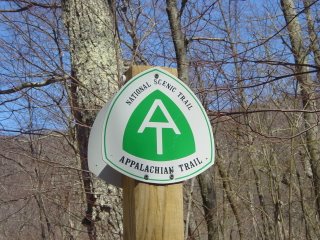 The Roanoke Times Sunday Edition feature story focuses on the challenges impacting the Appalachian Trail as it nears its 70th anniversary:
The Roanoke Times Sunday Edition feature story focuses on the challenges impacting the Appalachian Trail as it nears its 70th anniversary:









